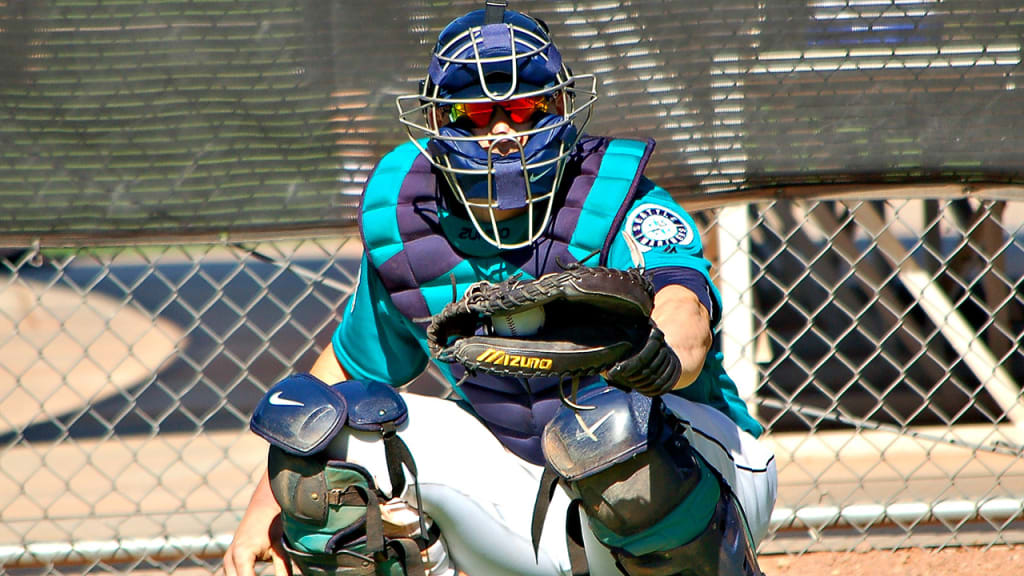
PEORIA, Ariz. -- With a new manager and coaching staff, there are some subtle changes at Mariners camp this spring. And one is having catchers talking and focusing more on their pitch-framing skills.
That was a topic of conversation at the first catchers meeting, when the group gathered Saturday with catching coordinator Dan Wilson before taking the field. And it's been a daily emphasis during workouts, with catchers taking turns setting up behind the plate and receiving the ball from a pitching machine alongside the normal pitchers throwing live bullpen sessions to other catchers.
• Mariners Spring Training info
Pitch framing metrics have come to the forefront the last few years as a way to judge how effective catchers are in racking up strikes on borderline pitches, and that knowledge is becoming part of the game.
"It's important. It's evolving," said new Mariners manager Scott Servais, himself a former big league catcher. "Dan came from the same era as I did. We caught at the same time, so we were taught a lot of the same things. And it's changed.
"The umpires are graded out now after every game on how good they were behind the plate. Along those lines, with TrackMan and what they're able to do on the number of pitches that catchers are getting strikes vs. catchers that aren't getting those same strikes, it does change the game. When Dan and I caught, it was an era where you were just supposed to catch it and hold it or stick it. Nowadays, guys are learning to funnel the ball a little toward the strike zone. That seems to have benefited the guys that are ranked at the top of the charts in framing statistics."
New Mariners catcher Chris Iannetta was surprised to learn he ranked low in pitch-framing statistics a few years ago with the Angels, so he studied those who graded well and worked hard to improve his game in that regard and ranked among the league leaders in 2015. He says having soft hands while receiving the ball is critical.
"The days of just sticking a pitch and not moving are over," Iannetta said. "Guys are putting an emphasis on really having soft hands. There are two styles, either you had soft hands and that was your game, or you tried to really be firm and just stick it as soon as you caught it and not move. I think the new numbers have shown that having a little softer approach is ideal from a numbers standpoint, so I think that's what everyone is going to migrate to."
Iannetta understands the importance of pitch framing, but like many in baseball is still wondering about the accuracy of the metrics being used.
"I really worked on it in the offseason and watched a lot of video of guys that did it well and tried to emulate some of those things," he said. "It seems so subjective that it's hard for me to really quantify it numbers-wise. If you get a pitch middle-middle and the umpire misses, that goes against you. I have a hard time grasping such an abstract concept and putting it into concrete math."
Iannetta said the point is not to deceive umpires, but to simply get strikes called strikes. That isn't a new concept, but it indeed seems to be a new focus.
"We always work on our receiving," Iannetta said. "But the way the game is kind of scored now, we get held accountable for framing, and it's a huge part of what we do from a numbers standpoint, and teams and front offices are starting to look at it. So we're putting a different emphasis on something that we've always done."

